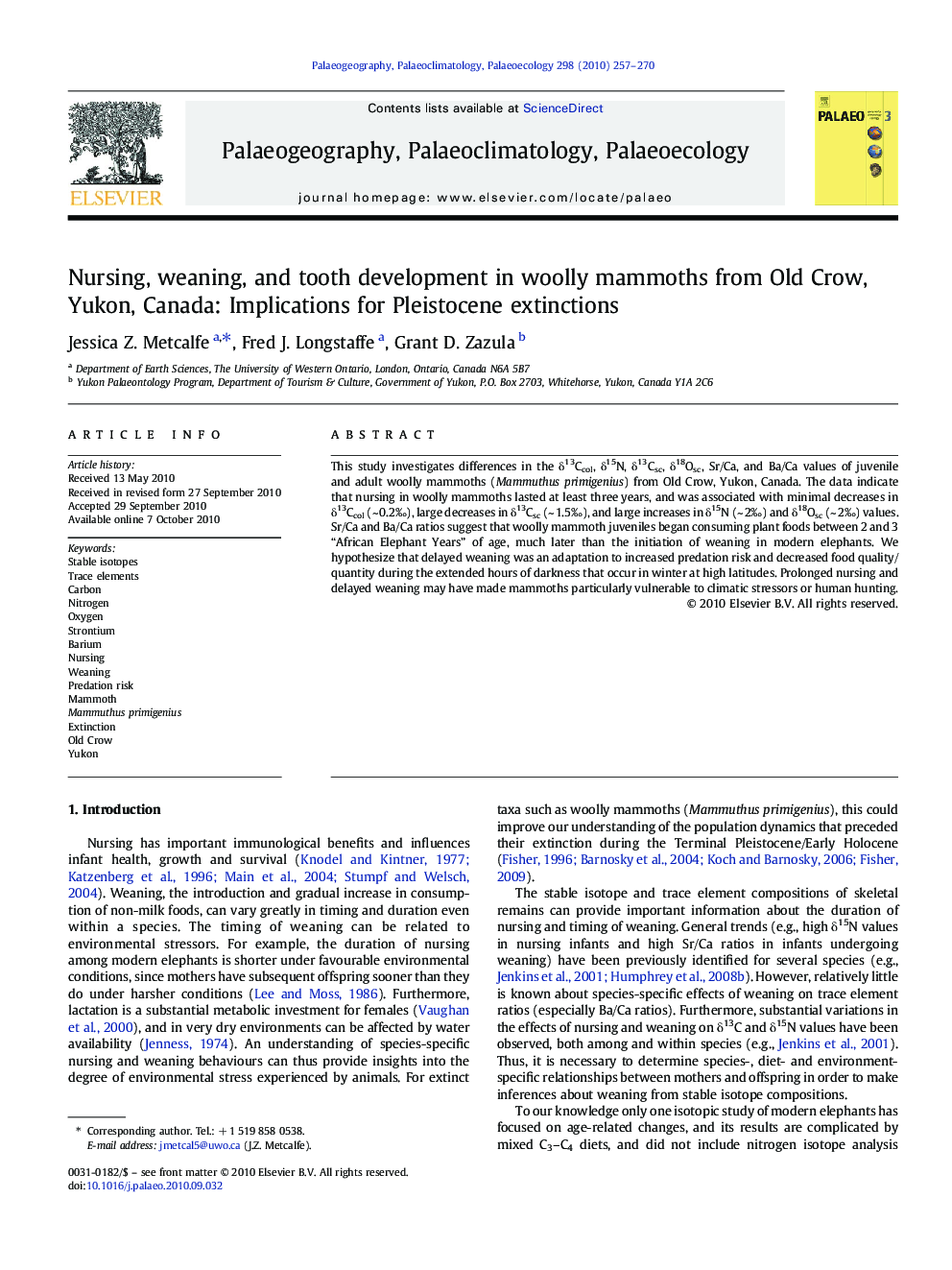| Article ID | Journal | Published Year | Pages | File Type |
|---|---|---|---|---|
| 4467418 | Palaeogeography, Palaeoclimatology, Palaeoecology | 2010 | 14 Pages |
This study investigates differences in the δ13Ccol, δ15N, δ13Csc, δ18Osc, Sr/Ca, and Ba/Ca values of juvenile and adult woolly mammoths (Mammuthus primigenius) from Old Crow, Yukon, Canada. The data indicate that nursing in woolly mammoths lasted at least three years, and was associated with minimal decreases in δ13Ccol (~ 0.2‰), large decreases in δ13Csc (~ 1.5‰), and large increases in δ15N (~ 2‰) and δ18Osc (~ 2‰) values. Sr/Ca and Ba/Ca ratios suggest that woolly mammoth juveniles began consuming plant foods between 2 and 3 “African Elephant Years” of age, much later than the initiation of weaning in modern elephants. We hypothesize that delayed weaning was an adaptation to increased predation risk and decreased food quality/quantity during the extended hours of darkness that occur in winter at high latitudes. Prolonged nursing and delayed weaning may have made mammoths particularly vulnerable to climatic stressors or human hunting.
